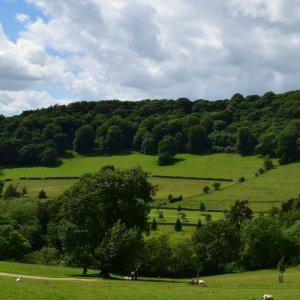
Guest article from: Lisa Norton, Head of Land Use Group, Countryside Survey Project Manager at the Centre for Ecology and Hydrology.
Quantifying natural capital at a national scale is essential for the future management of the natural resources which support human existence and wellbeing. A new paper from the Centre for Ecology and Hydrology (CEH) describes how national habitat monitoring is being used to efficiently monitor natural capital.
In the UK, the National Ecosystem Assessment in 2011 was a first step on the route to being able to detail our natural capital assets. At its core was CEH‘s Countryside Survey datasets: The Land Cover Map and Countryside Field Survey - aligned monitoring datasets which have been in place since 1990 and 1978 respectively.
Since the National Ecosystem Assessment was produced we’ve been using data from the Countryside Survey and working on methods to produce national scale metrics which detail natural capital across Great Britain.
Existing widely used methods of natural capital or ecosystem service mapping involve combining satellite data on habitat extents with coarse variables which describe service delivery by habitat. Such methods suffer from uncertainty surrounding accuracy of habitat recognition from satellite data as well as a lack of information on habitat condition.
The CEH natural capital data consist of a unique combination of nationally representative field based survey (integrating habitats, landscape features, vegetation, soils and freshwater) together with spatial information on habitat extents from Earth Observation collected at the same time as the field survey (Land Cover Map). This data combination enables the production of national maps indicating how habitats, and natural capital measures associated with them, vary spatially across Great Britain. For example, rather than using a single average UK measure for nectar plant richness of Neutral Grassland, the Countryside Survey data can provide measures of nectar plant richness for Neutral Grassland which are relevant to the location of the grassland.
The new paper published in Ecosystem Services describes the methods CEH have used and provides three examples of very different natural capital metrics which have been produced using this methodology; soil carbon, nectar plant species richness and freshwater biodiversity. The paper also describes how national policy interest in the outputs of this work has led to the production of downloadable mapped data and metadata which policy makers are able to use in landscape decision making. As countries across Europe begin to adopt natural capital approaches to ensure future environmental and human wellbeing, this research provides a model framework for national or regional approaches to data collection for mapping natural capital linked to the provision of ecosystem services.
The work emphasises the benefits of aligned satellite and well-designed field survey approaches which can help to ensure field resources are most effectively deployed to provide measures which describe spatial variability in the provision of natural capital supporting ecosystem service delivery.